Question of the Week Number 1: July 19, 2018
“What is killing my St. Augustine? It’s just burning up. The dead area is getting bigger and bigger.”
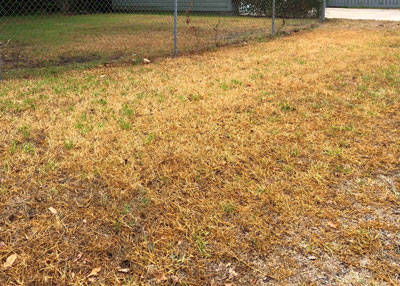
This is about as bad as chinch bug damage can get. Almost all of this University Park lawn is going to be lost. Photo from last week.
My wife and I were running errands (truthfully, driving errands) across Dallas and Collin Counties a few days ago and it was depressing to see how much damage chinch bugs are doing already this year. I believe it may be the worst year I’ve ever seen. It’s not as if St. Augustine hasn’t had enough other challenges with take all root rot, gray leaf spot, brown patch and even cold injury. Now these pests.
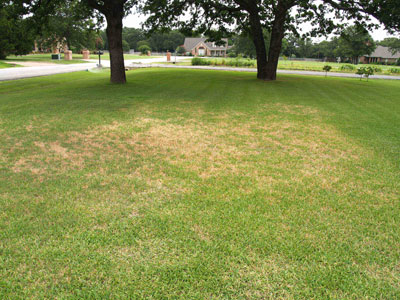
Chinch bugs will be in hottest, sunniest parts of yard, often coming back to the same spots each summer.
Chinch bug facts…
• Almost always attack St. Augustine.
• Always in hottest, sunniest parts of your yard.
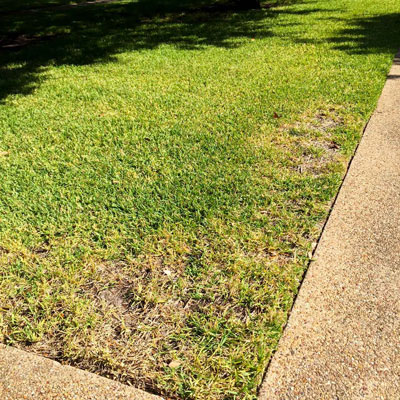
Notice how the chinch bugs have cropped up along the reflected heat of the sidewalks.
• Usually appear from June into mid-September.
• Grass appears dry, but watering doesn’t help.
• Infested areas quickly turn brown.
• Forget trying to push a tin can into the ground and filling it with water. You’ll break your arms, bend the can and frustrate yourself immensely. It never works!
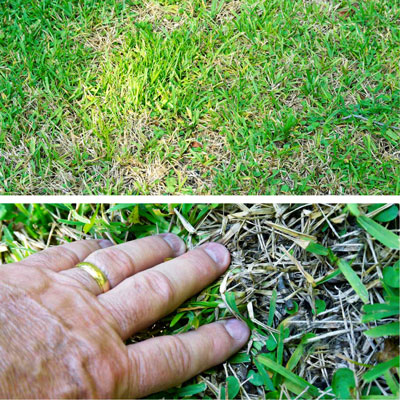
Get on hands and knees and look for BB-sized black insects within the area of dying grass.
• Instead, look at boundaries of green and dying grass and you’ll see the active bugs. BB-sized and moving rapidly. Black with white diamonds on their wings. Young nymphs are smaller, red.
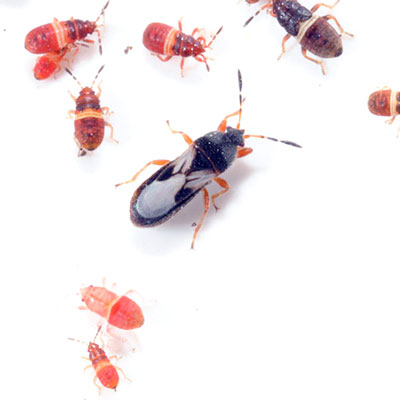
From Mississippi State University, this photograph by Blake Layton shows various stages in the development of chinch bugs. You’ll be looking primarily for the adult black insects.
• Treat with Merit insecticide. Usually just one treatment per year will stop their damage, but if they return, be ready again.
• Do not delay. They will quickly kill big parts of your lawn. Once that grass is totally brown it will not green up again. All you can do is replant either with sod or plugs.
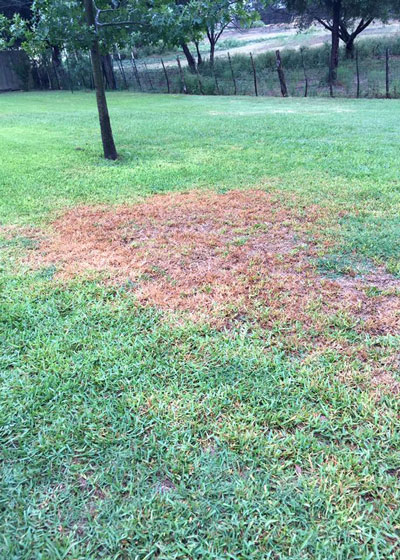
Treat before damage becomes this severe. This St. Augustine will not green up again.
